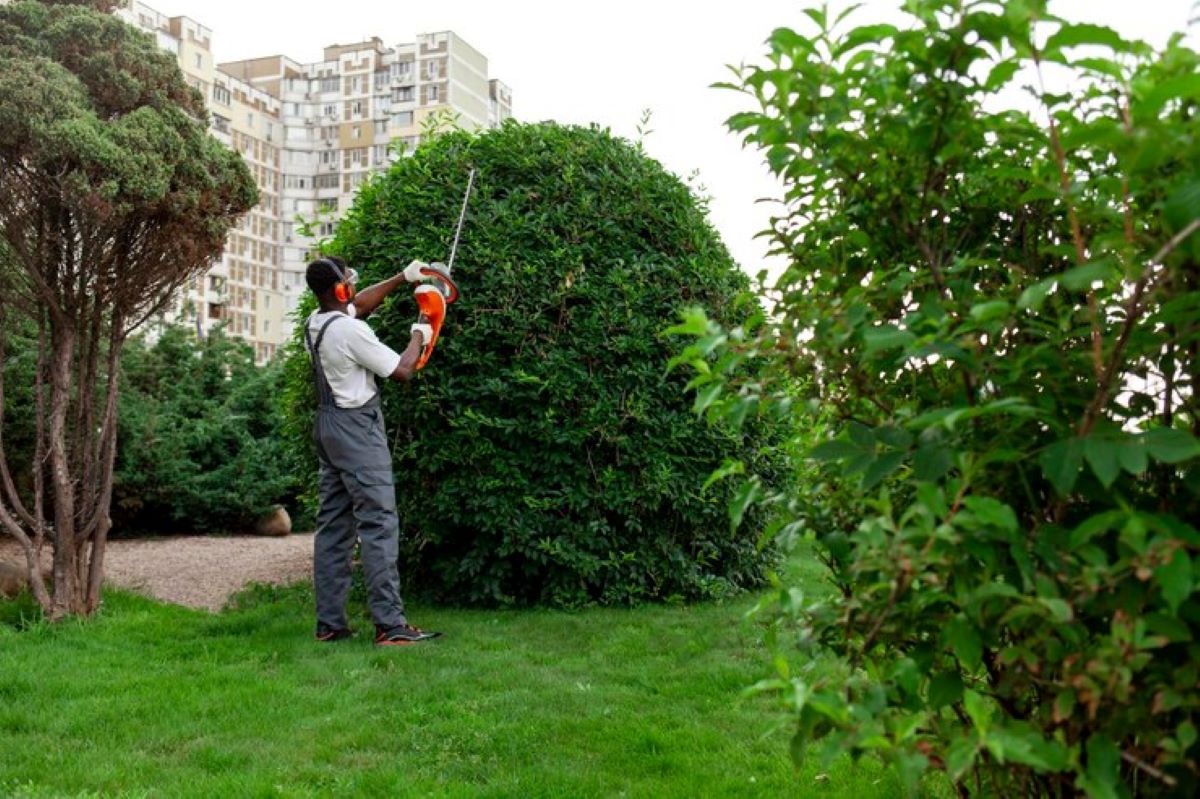Creating a beautiful green wall through hedge shaping is both an art and a science. A well-maintained hedge not only enhances the aesthetic appeal of a garden but also provides privacy, reduces noise, and creates a habitat for wildlife. This article delves into the essential tips and techniques for mastering hedge shaping, ensuring that your green walls are not only visually stunning but also healthy and vibrant.
Understanding Hedge Types
Before embarking on the journey of hedge shaping, it is crucial to understand the different types of hedges available. Each type has its unique characteristics, growth patterns, and maintenance requirements.
Deciduous vs. Evergreen Hedges
Deciduous hedges lose their leaves in winter, offering a seasonal change in appearance. They can provide beautiful blooms in spring and summer, but require more maintenance during the leaf drop period. Examples include beech and hornbeam, which can be shaped into striking forms.
On the other hand, evergreen hedges retain their foliage year-round, providing consistent privacy and shelter. Popular choices include yew, boxwood, and laurel. These hedges are often easier to shape and maintain, making them ideal for those new to hedge shaping.
Moreover, the aesthetic appeal of evergreen hedges cannot be overstated; their lush green foliage creates a vibrant backdrop throughout the year, enhancing the overall beauty of the garden. Additionally, evergreens can serve as excellent windbreaks, protecting tender plants from harsh weather conditions. This dual functionality makes them a favourite among gardeners looking to combine beauty with practicality.
Choosing the Right Plants
Selecting the right plants for your hedge is essential for achieving the desired look and functionality. Consider factors such as growth rate, height, and width when making your selection. Fast-growing plants like leylandii can quickly provide privacy, while slower-growing varieties like boxwood may require more time but offer a more refined appearance.
Additionally, consider the climate and soil conditions of your garden. Native plants are often more resilient and require less maintenance, making them a sustainable choice for hedge shaping. For instance, using native species not only supports local wildlife but also ensures that your hedge thrives in its natural environment, reducing the need for additional watering or fertilisation. Furthermore, incorporating a mix of plant types can create a more diverse and visually interesting hedge, attracting various pollinators and enhancing the ecological balance of your garden.
Essential Tools for Hedge Shaping
Having the right tools at your disposal is vital for effective hedge shaping. The right equipment not only makes the task easier but also ensures a clean and professional finish.
Hand Tools
For smaller hedges or detailed shaping, hand tools such as shears and secateurs are invaluable. Bypass shears are particularly useful for making clean cuts, while hedge shears are ideal for trimming larger areas. Ensure that tools are sharp and well-maintained to avoid damaging the plants.

Power Tools
For larger hedges, power tools can save time and effort. Electric or petrol-powered hedge trimmers are efficient for shaping and maintaining larger areas. However, caution is advised when using these tools, as they can easily damage the plants if not handled correctly. Always follow the manufacturer’s instructions for safe operation.
Techniques for Shaping Hedges
Shaping hedges requires a combination of techniques and an understanding of plant growth. The following methods will help achieve the desired shape and health of your hedges.
Basic Shaping Techniques
The most common technique for shaping hedges involves trimming the top and sides to create a uniform shape. For a formal look, aim for straight lines and sharp angles, while a more natural appearance can be achieved with soft curves. Regular trimming encourages bushy growth, resulting in denser foliage.
It is advisable to start shaping your hedges in spring, just before the growing season. This timing allows the plants to recover quickly from pruning and encourages new growth. Always trim back to a leaf node to promote healthy regrowth.
Creating Layers and Depth
For a more dynamic and visually appealing hedge, consider creating layers and depth. This can be achieved by planting a mix of different species or varying the heights of the plants within the hedge. Taller plants can be placed at the back, with shorter varieties in front, creating a lush, multi-dimensional effect.
Additionally, layering can enhance the hedge’s ability to provide shelter for wildlife and create a more natural habitat. This approach not only adds visual interest but also promotes biodiversity in your garden.
Maintenance for Healthy Hedges
Regular maintenance is crucial for the longevity and health of your hedges. A well-maintained hedge will not only look better but will also be more resilient to pests and diseases.
Watering and Feeding
Proper watering is essential, especially during dry spells. Newly planted hedges require consistent moisture to establish their roots. Once established, most hedges will need less frequent watering, but it is still important to monitor soil moisture levels.
Feeding your hedges with a balanced fertiliser in spring can promote healthy growth and vibrant foliage. Organic options, such as compost or well-rotted manure, can provide essential nutrients while improving soil structure.
Pest and Disease Management
Regularly inspect your hedges for signs of pests or diseases. Common issues include aphids, scale insects, and fungal infections. Early detection is key to effective management. Natural remedies, such as neem oil or insecticidal soap, can be effective against pests, while proper spacing and air circulation can help prevent fungal diseases.
Seasonal Considerations
Each season presents unique challenges and opportunities for hedge shaping and maintenance. Understanding these seasonal changes can help in planning and executing hedge care effectively.
Spring: The Ideal Time for Shaping
Spring is the prime time for shaping hedges, as plants are just beginning to grow and can recover quickly from pruning. This is also the time to assess any winter damage and make necessary cuts. Regular trimming during this season encourages healthy new growth and maintains the desired shape.
Summer: Monitoring Growth
During the summer months, hedges may require more frequent trimming to maintain their shape, especially fast-growing varieties. This is also a good time to monitor for pests and diseases, as warmer weather can lead to increased activity. Regular watering and feeding during this period can promote lush, healthy growth.
Autumn: Preparing for Winter
As autumn approaches, it is essential to prepare hedges for the colder months. A final trim can help maintain shape and remove any dead or damaged wood. Mulching around the base can protect roots from frost and retain moisture. Additionally, consider applying a slow-release fertiliser to support the plants through winter.

Creating a Stunning Green Wall
A well-shaped hedge can serve as a stunning green wall, transforming any garden space into a tranquil retreat. The key to achieving this lies in understanding the plants, employing the right techniques, and committing to regular maintenance.
Incorporating Design Elements
To enhance the visual appeal of your green wall, consider incorporating design elements such as trellises, arches, or decorative pots. These features can add height and interest, creating a more dynamic landscape. Additionally, planting flowering species or incorporating seasonal plants can provide bursts of colour throughout the year. Click here to get more about finding the right local experts.
Utilising Hedges for Privacy and Noise Reduction
Beyond aesthetics, hedges can serve practical purposes such as providing privacy and reducing noise. Taller hedges can create a natural barrier against prying eyes and unwanted sounds, making outdoor spaces more enjoyable. When planning a hedge for these purposes, consider the height and density of the plants to ensure maximum effectiveness.
Conclusion
Mastering the art of hedge shaping is a rewarding endeavour that enhances both the beauty and functionality of outdoor spaces. By understanding the types of hedges, employing the right tools and techniques, and committing to regular maintenance, anyone can create stunning green walls that thrive for years to come. With patience and dedication, the perfect hedge can transform any garden into a lush, vibrant sanctuary.

